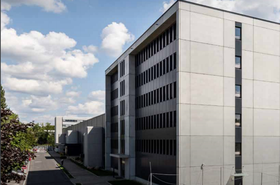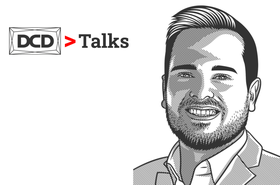To those outside the industry, data centers are often viewed as noisy, unsightly, power-hungry facilities that are eating up the world’s energy. But when it comes to combating climate change and wider sustainability issues, data centers are in fact a planetary ally.
In terms of sustainability, the progress already made by the data center industry is nothing short of extraordinary. And despite the world continuing to digitize at breakneck pace, the industry has managed to avoid any significant jumps in energy usage, thanks to vast improvements in efficiencies and a shift in how the industry operates.
As testament to the tremendous innovation and forward thinking present in the industry, to help officially establish data centers as an integral piece of the sustainability puzzle, back in 2021, data center operators and trade associations committed to making data centers climate neutral (or, net-zero) by 2030, via the Climate Neutral Data Center Pact.
Today, this net-zero ambition is a mainstream concept, resulting in the reshaping of global economies, with accelerated digital transformation having been identified as the pivotal change needed for our collective goals to be realized.
But rapid digitization, particularly on a global scale, is no easy feat. With every geography coming with its own connectivity, environmental and regulatory challenges, the importance of finding a partner that can do it all cannot be understated.
With offices located all over the world, a global data center footprint and local expertise, NTT Global Data Centers is perfectly positioned to serve hyperscalers and enterprises alike, leveraging its industry experience and global capabilities to deliver digitization to those who need it, where they need it.
“It’s about understanding what our clients want and where they’re developing,” says Konstantin Hartmann, vice president, sales and commercial at NTT Global Data Centers, EMEA.
“We have to differentiate from one site to another, considering things like climatic conditions, how developed is the area? What is the available energy supply? What energy mix will supply our facility? Are we in an area where we have the opportunity for our own energy solutions?”
“In new locations where we’re not yet based, we also have to consider things like the number of other data centers, the political situation, the population and so on,” adds Chris Marshall, senior director, real estate management, at NTT Global Data Centers.
Evidently, there are a lot of plates that need spinning when it comes to opening – and operating – a data center that not only works but works in harmony with its environment.
Communication to combat climate change
Unlike Scope 1 and 2 emissions, which are created either directly or indirectly by an organization – and are therefore far easier to monitor – Scope 3 encompasses the potentially vast category of emissions created within an organization’s supply chain.
“When it comes to greenhouse gas (GHG) emissions, particularly Scope 3 emissions, many companies are still playing catch up, and trying to understand how they actually determine the Scope 3 footprint of their supply chains. To do this, different stakeholders from across the industry need to work together and share information,” says Hartmann.
Therefore, NTT is on a mission to better understand what’s driving its suppliers, customers and partners, communicating and collaborating in order to determine and ultimately improve its Scope 3 footprint. After all, you can’t manage what you don’t monitor.
“We have an important part to play as data center operators,” says Marshall. “It's no surprise that we speak with power providers and the like very closely, but we can only be successful across the board when we're working with all the other players who are involved in the data and data center industry, be that municipalities or end users.”
This kind of transparency and communication will be the lynchpin of our collective success. Without sharing what we know and without sharing the data, it will be incredibly difficult to determine the true emissions of the services we are providing.
But it seems that when key players, such as Google, Microsoft, AWS and Meta – or any large data center operator for that matter – put their heads above the parapet, they are often met with (unfounded) skepticism.
“These large data centers that have developed in recent years are more visible than they were in the past, so people immediately think ‘they’re huge, they probably consume too much power’,” says Hartmann. “But what about these data centers that we don’t see, sitting in small rooms and basements of different companies around the globe. They’re not visible to the outside world, but they’re totally inefficient in how they’re operated.”
Conversation leads to collaboration
With digitization having been identified as a catalyst toward sustainability, so too have data centers. This has led to cross-industry conversations that are already helping bring economies and communities together, via technology, for the benefit of all.
“In certain regions, city planners are now proactively setting up calls with data center organizations and operators to see how they can work with us to provide and come up with solutions that can help both parties,” says Marshall.
“There's a whole 360-degree discussion starting to take place in certain areas now in terms of trying to get us well located so we can provide sustainable solutions. They’re aware we are a critical infrastructure now, so they are happy to accommodate us and also give us the necessary requirements so that we can be successful in terms of providing services with low carbon output.”
For example, NTT is currently helping interconnect the city of Las Vegas. Having recognized the city was experiencing problems with stand-still traffic from tourists coming into the city, NTT was able to provide sensors, solutions and the necessary data, to help better manage traffic flow, and therefore reduce its impact on both people, and the environment.
“We see ourselves as a partner for the city. Providing not only the digital backbone with a data center in order to store and process that data, but to provide the necessary hardware and software solutions that are needed to manage and analyze the data accordingly, so that the city can make better decisions and can actually develop further in the future,” says Hartmann.
Connecting people to a sustainable future
Of course, we all want to reduce our environmental impact for the sake of our planet, but what about the impact our environment has on us?
In the broadest sense, the word ‘sustainability’ is defined as ‘the ability to maintain or support a process continuously over time’. For NTT, this means helping people live lives they can sustain too.
This support starts with education, and NTT has committed to providing five million children and young people from underprivileged areas with digital access and education opportunities by 2030.
“We believe that diverse and inclusive communities are needed,” says Hartmann. “Our focus is to provide opportunities for people to realize their potential with the help of our ICT solutions. And with the data center element, we have that digital backbone to actually facilitate and enable these solutions.”
Leveraging a vast global footprint of data center capabilities and ICT solutions, this commitment from NTT is already having a demonstrable impact, with programs all over the world including:
DigiKids, Poland. As part of NTT’s response to the Ukrainian refugee crisis, the company is supporting Digikids in Poland, giving children access to technology to problem-solve, work in teams and build self-confidence, creating a positive experience for those who have fled their homes while teaching critical skills for their future.
NTT Academy and IT for Girls, Brazil. This program aims to tackle both female unemployment rates and IT-industry skills shortages, and has already delivered free training in IT-industry certifications and skills to over 3,000 people. NTT specialist volunteers help to host live-streamed classes, with a record 543 people online at one session.
Girls School India Program. Since 2017 this program has provided access to education and technology by supporting various developmental initiatives for girls at the Shri Dayanand Balika Vidyalaya School and Junior College in Mumbai, including book drives, midday meals, a computer lab, a science lab, visits to NTT offices and the opportunity to meet female leaders within the company.
In all its philanthropic work, NTT actively encourages its employees to get involved, and already provides three days of volunteering leave to its staff. From 2025, the company aims to contribute one million hours of employee volunteering to education and conservation.
This diversity and inclusivity is just as important within the organization as it is outside. By 2025, NTT has pledged to have more than 50 percent of its employees belonging to one or more diversity categories, as well as doubling the diversity of its executive leadership team.
Silo to hero
No one organization can achieve a more sustainable world, nor can it be created in a silo. And although some companies are doing a superb job trailblazing in transparency, this is not a journey we can advance alone.
Historically, the data center industry has been notoriously secretive, and fiercely competitive, but it’s high time that narrative changed. It’s not a lack of innovation or ideas holding us back, but a lack of communication.
For progress to continue, we need to extend beyond our industry, to both educate and collaborate with our peers, to ensure the digital transformation journey continues, sustainably, for the benefit of communities, global economies and the environment.
We are an ally, not the enemy, and it’s time we let the rest of the world know that.
More from NTT
-

Sponsored Africa rising: Supporting the Sub-Saharan Africa of tomorrow
With the rapid economic growth of Sub-Saharan Africa having catalyzed a veritable tsunami of digital demand, the continent’s need for world-class data center facilities has never been more compelling
-

NTT launches Berlin 2 campus in Germany
First two of four buildings offer 24MW across 10,000 sqm
-

DCD>Talks Madrid with David Van Elswyk, NTT
David Van Elswyk, Site Operations Manager at NTT, sits down with Vlad-Gabriel Anghel to talk about the growing Madrid data center region.

